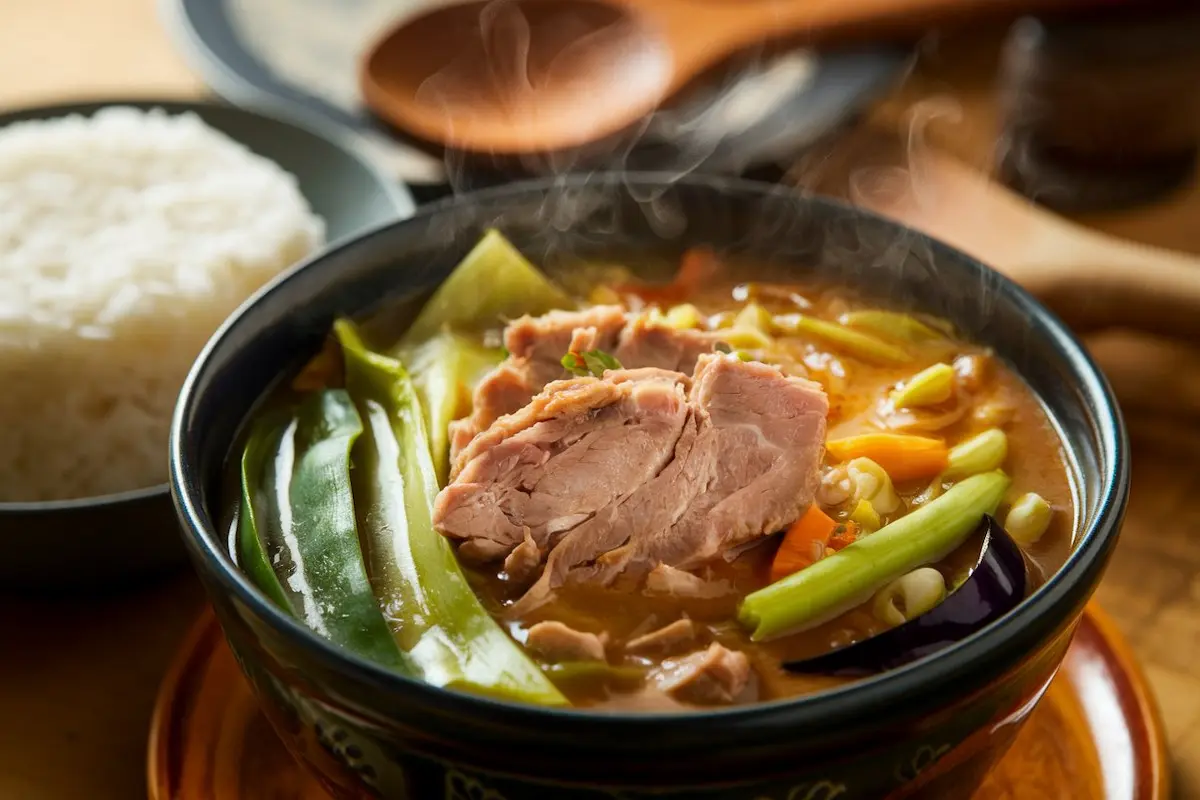Sinigang is more than just a meal; it’s a culinary experience deeply rooted in Filipino culture. Sinigang has been recognized globally, with TasteAtlas naming it the best vegetable soup in the world. This classic dish, characterized by its tangy broth and hearty ingredients, has earned its place as one of the most beloved comfort foods in the Philippines. Known for its adaptability, sinigang can be made with various proteins, vegetables, and souring agents, ensuring there’s a version for everyone.
If you’re exploring Filipino cuisine, there’s no better place to start than with the sinigang recipe. This dish isn’t just food—it’s a celebration of tradition and togetherness.
Table of Contents
What is Sinigang?
Sinigang is a hearty soup known for its distinct sour flavor, typically achieved through tamarind. The dish combines savory and tangy elements, creating a perfectly balanced meal that Filipinos love. While it is traditionally served as a main course, its versatility allows it to be paired with other dishes, making it a staple at gatherings.
Unlike many other soups, sinigang adapts to whatever ingredients you have on hand. This flexibility makes it a practical choice for everyday cooking. To discover other adaptable recipes, explore the Carnitas Breakfast Recipe for a flavorful twist on a classic dish.
Essential Ingredients for a Sinigang Recipe
Crafting the perfect sinigang recipe starts with selecting high-quality ingredients. Each element plays a critical role in achieving the dish’s signature flavor and texture.
Proteins: The Heart of Sinigang
Choosing the right protein is essential, as it defines the overall character of the dish:
- Pork Belly: The traditional choice, offering rich flavor and a tender texture.
- Shrimp: A seafood variant that adds a touch of sweetness to the broth.
- Beef Ribs: Provides a robust, hearty taste, perfect for a colder day.
- Chicken: A lighter alternative, ideal for those looking for a leaner option.
Vegetables: The Soul of the Dish
Vegetables in sinigang aren’t just about nutrition; they add depth and vibrancy:
- Kangkong (Water Spinach): Delivers a refreshing crunch.
- String Beans: Contributes a subtle sweetness and pleasant texture.
- Eggplant: Absorbs the broth’s rich flavors beautifully.
- Daikon Radish: Balances the sourness with its mild peppery note.
- Okra: Enhances the soup’s consistency with its natural thickening properties.
Souring Agents: The Key to Authenticity
The souring agent is what makes sinigang unique. While tamarind is the go-to choice, there are many exciting alternatives:
- Tamarind: The classic choice for traditional sourness.
- Green Mango: A sharper, tangier alternative.
- Guava: Balances sourness with a hint of sweetness.
- Pineapple: A tropical option that adds fruity undertones.
For adventurous cooks, incorporating pineapple can also work wonders in unique recipes like the Swamp Soup Recipe.
Step-by-Step Instructions for Cooking Sinigang
Mastering the sinigang recipe is easier than it seems. By following these steps, you’ll create a dish that is both delicious and authentic.
Step 1: Prepare the Broth
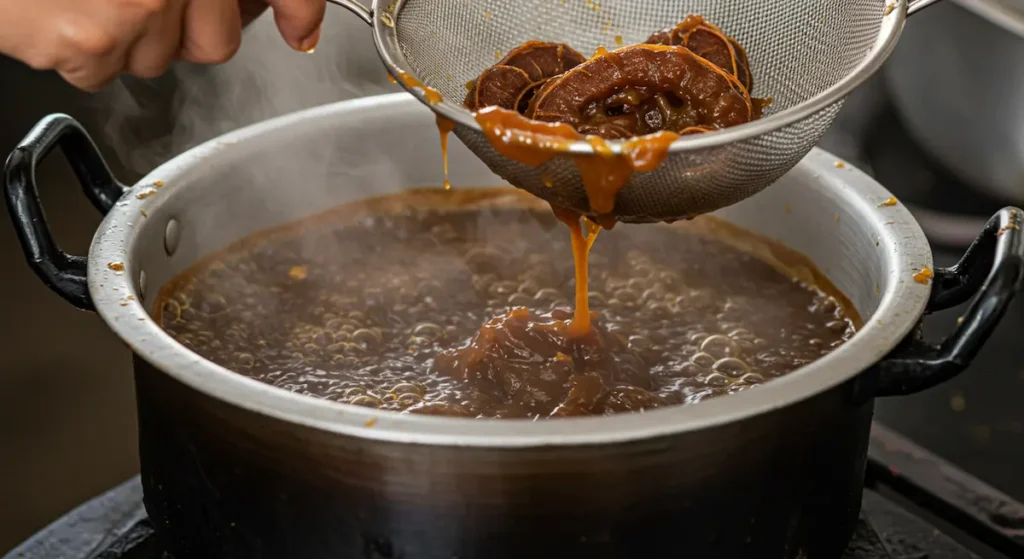
Begin by boiling tamarind pods in water for approximately 40 minutes. Afterward, strain the liquid to remove solids, leaving behind a smooth and tangy base.
Step 2: Cook the Meat
Add your chosen protein—pork, shrimp, or beef—into the broth and simmer until it becomes tender. While the meat cooks, include onions and tomatoes to enhance the flavor profile.
Step 3: Add Vegetables in Sequence
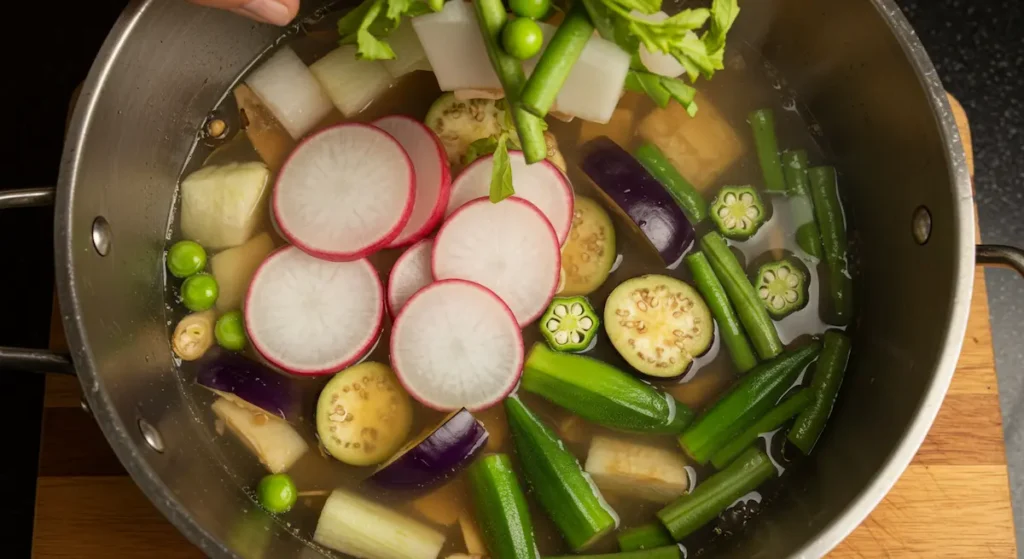
- Start with vegetables that take longer to cook, such as radish and eggplant.
- Follow with string beans and okra to ensure they remain crisp.
- Finally, toss in kangkong leaves just before serving to retain their fresh, vibrant color.
Step 4: Season and Serve
Add fish sauce for an umami boost and adjust the seasoning to taste. For an extra kick, include chili peppers or black pepper. Serve the dish hot with steamed rice for a satisfying meal.
For those who enjoy experimenting, the Marry Me Chicken Pasta Recipe offers a flavorful complement to your sinigang.
Tips for the Perfect Sinigang Recipe
Choose the Right Meat Cuts
Opt for pork belly or ribs if you want tender, flavorful meat. For a lighter option, chicken thighs work wonderfully.
Balance the Flavors
The hallmark of a great sinigang lies in balancing its sour, savory, and slightly sweet notes. Taste as you go, gradually adding souring agents to avoid overwhelming the dish.
Preserve Vegetable Freshness
Adding vegetables at the right time is key. Stagger their inclusion based on cooking times to ensure they retain their texture and color.
Popular Sinigang Variations to Try
The beauty of sinigang lies in its adaptability. Here are some exciting variations:
1. Sinigang na Hipon (Shrimp Sinigang)
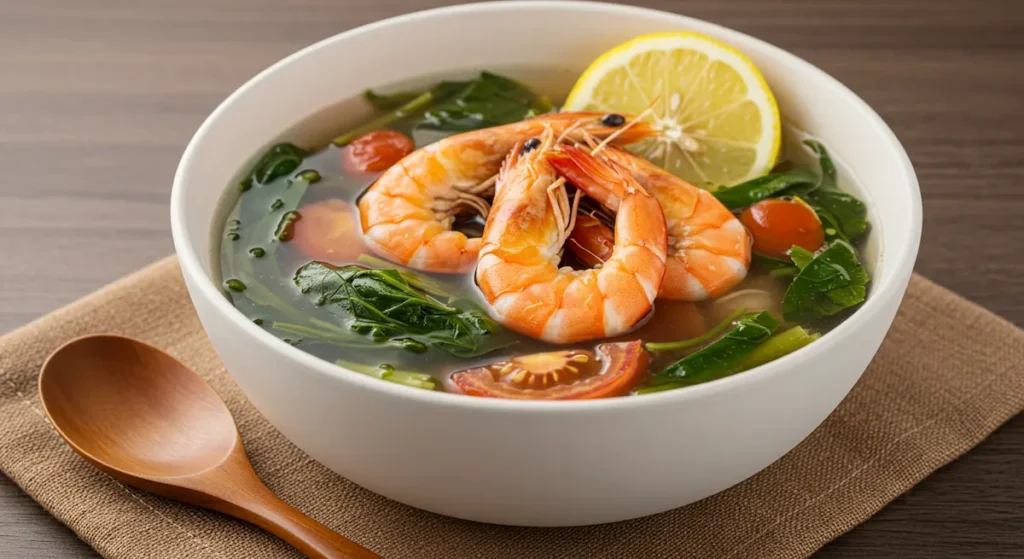
This seafood version is light and refreshing. The shrimp’s natural sweetness complements the tangy broth beautifully.
2. Sinigang sa Miso
Adding miso paste introduces a rich umami flavor, perfect for those who enjoy savory dishes.
3. Vegetarian Sinigang
Swap the protein for tofu and mushrooms for a plant-based alternative that doesn’t compromise on flavor.
For more vegetarian inspiration, explore the Vegan Kabocha Squash Recipes for delicious plant-based ideas.
Cultural Significance of Sinigang
Sinigang is more than just a recipe; it’s a representation of Filipino culture and tradition. Often served during family gatherings, it fosters a sense of togetherness and warmth. This dish has also gained international recognition, with TasteAtlas naming it the “Best Vegetable Soup in the World” in 2021.
Its unique flavor and versatility make it an ambassador for Filipino cuisine. Whether you’re Filipino or not, cooking sinigang is a way to connect with this rich heritage.
FAQs About Sinigang Recipe
1. What Can I Use Instead of Tamarind?
If tamarind isn’t available, green mango, guava, or pineapple can provide similar sour notes.
2. How Do I Store Leftover Sinigang?
Refrigerate leftovers in an airtight container for up to three days. Reheat gently to preserve the vegetables’ texture.
3. Can I Freeze Sinigang?
Yes, but it’s best to freeze the broth and protein separately from the vegetables. This prevents the veggies from becoming mushy when reheated.
For a sweet treat to accompany your meal, try the Ultimate Guide to Italian Christmas Desserts.
Conclusion
The sinigang recipe is more than a dish—it’s an invitation to explore the heart of Filipino culture. With its tangy broth, tender protein, and vibrant vegetables, it’s no wonder this dish has captured the hearts of food lovers worldwide. Whether you’re sticking to traditional ingredients or experimenting with new flavors, sinigang is sure to impress.
As you master this dish, let it remind you of the power of food to bring people together. For even more culinary ideas, check out the Delicious Breakfast Sides for complementary dishes that elevate any meal.
Happy cooking!
Print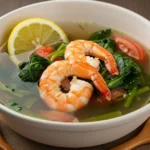
Sinigang na Hipon (Shrimp Sinigang) Recipe
- Total Time: 45 minutes
- Yield: 4 servings 1x
Description
A tangy and comforting Filipino sour soup made with fresh shrimp, tamarind broth, and vegetables.
Ingredients
Main Ingredients:
- 500g (1 lb) fresh shrimp, cleaned and deveined
- 6 cups water
- 1 medium onion, quartered
- 2 large tomatoes, chopped
- 1 cup tamarind pulp (or 1 pack sinigang mix)
- 1 tablespoon fish sauce (patis)
- 1 teaspoon salt (adjust to taste)
- ½ teaspoon ground black pepper
Vegetables:
- 1 cup kangkong (water spinach)
- 1 cup string beans, cut into 2-inch pieces
- 1 small eggplant, sliced
- 5–6 pieces okra, whole or sliced
- 1 medium radish, peeled and sliced
Optional Additions:
- 1–2 green chili peppers (for a slight kick)
- ½ cup green mango or guava (for a natural souring alternative)
Instructions
1️⃣ In a large pot, bring 6 cups of water to a boil.
2️⃣ Add the onion and tomatoes, then simmer for 5 minutes to release their flavors.
3️⃣ Mash the tamarind pulp in a separate bowl with hot water, then strain the liquid into the pot (or dissolve the sinigang mix directly).
4️⃣ Add radish and eggplant first, as they take longer to cook. Simmer for 5 minutes.
5️⃣ Follow with string beans and okra, cooking for another 3 minutes.
6️⃣ Add the shrimp and cook until they turn pink (about 3 minutes).
7️⃣ Stir in the fish sauce, salt, and black pepper to season.
8️⃣ Finally, add the kangkong and green chili (if using). Let it simmer for 1 more minute, then turn off the heat.
9️⃣ Ladle into bowls and serve hot with steamed rice. Enjoy the delicious tangy and savory flavors!
Notes
✅ For a richer taste, use shrimp stock instead of plain water.
✅ Want it extra sour? Add green mango slices or more tamarind concentrate.
✅ Prefer a milder flavor? Use a mix of guava and tamarind for a balanced tang.
✅ Make it heartier by adding fish or mussels for a seafood medley.
- Prep Time: 15 minutes
- Cook Time: 30 minutes
Nutrition
- Serving Size: 1 serving
- Calories: ~180 kcal
- Fat: 5g
- Carbohydrates: 10g
- Fiber: 3g
- Protein: 20g

